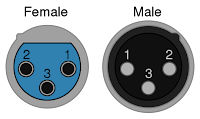Microphones
Key words:
Audio Recording - Sound recording. Variety of different recording environments.
ADR - Additional Dialogue Recording. Re-dub for clarity if not clear enough.
Shot-gun Mic - Acoustic-to-electric transducer or sensor that converts sound into an electrical signal. Common for outdoor use.
Condenser Mic - Used for capturing high quality sound. 48V Phantom Power to operate.
Onboard Condenser Mic - Useful for stereo.
Studio Condenser Mic - Used for controlled environments.
XLR Cable - Used to connect a mic to a recording device.



























